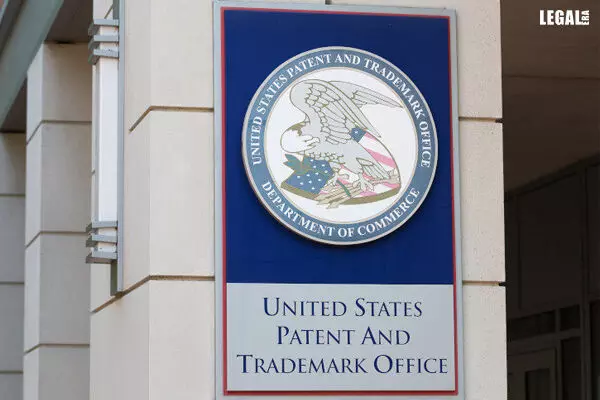- Home
- News
- Articles+
- Aerospace
- Artificial Intelligence
- Agriculture
- Alternate Dispute Resolution
- Arbitration & Mediation
- Banking and Finance
- Bankruptcy
- Book Review
- Bribery & Corruption
- Commercial Litigation
- Competition Law
- Conference Reports
- Consumer Products
- Contract
- Corporate Governance
- Corporate Law
- Covid-19
- Cryptocurrency
- Cybersecurity
- Data Protection
- Defence
- Digital Economy
- E-commerce
- Employment Law
- Energy and Natural Resources
- Entertainment and Sports Law
- Environmental Law
- Environmental, Social, and Governance
- Foreign Direct Investment
- Food and Beverage
- Gaming
- Health Care
- IBC Diaries
- In Focus
- Inclusion & Diversity
- Insurance Law
- Intellectual Property
- International Law
- IP & Tech Era
- Know the Law
- Labour Laws
- Law & Policy and Regulation
- Litigation
- Litigation Funding
- Manufacturing
- Mergers & Acquisitions
- NFTs
- Privacy
- Private Equity
- Project Finance
- Real Estate
- Risk and Compliance
- Student Corner
- Take On Board
- Tax
- Technology Media and Telecom
- Tributes
- Viewpoint
- Zoom In
- Law Firms
- In-House
- Rankings
- E-Magazine
- Legal Era TV
- Events
- Middle East
- Africa
- News
- Articles
- Aerospace
- Artificial Intelligence
- Agriculture
- Alternate Dispute Resolution
- Arbitration & Mediation
- Banking and Finance
- Bankruptcy
- Book Review
- Bribery & Corruption
- Commercial Litigation
- Competition Law
- Conference Reports
- Consumer Products
- Contract
- Corporate Governance
- Corporate Law
- Covid-19
- Cryptocurrency
- Cybersecurity
- Data Protection
- Defence
- Digital Economy
- E-commerce
- Employment Law
- Energy and Natural Resources
- Entertainment and Sports Law
- Environmental Law
- Environmental, Social, and Governance
- Foreign Direct Investment
- Food and Beverage
- Gaming
- Health Care
- IBC Diaries
- In Focus
- Inclusion & Diversity
- Insurance Law
- Intellectual Property
- International Law
- IP & Tech Era
- Know the Law
- Labour Laws
- Law & Policy and Regulation
- Litigation
- Litigation Funding
- Manufacturing
- Mergers & Acquisitions
- NFTs
- Privacy
- Private Equity
- Project Finance
- Real Estate
- Risk and Compliance
- Student Corner
- Take On Board
- Tax
- Technology Media and Telecom
- Tributes
- Viewpoint
- Zoom In
- Law Firms
- In-House
- Rankings
- E-Magazine
- Legal Era TV
- Events
- Middle East
- Africa
Federal Circuit Overturns Rosen-Durling Test; USPTO Issues New Guidelines

Federal Circuit Overturns Rosen-Durling Test; USPTO Issues New Guidelines
The U.S. Court of Appeals for the Federal Circuit, sitting en banc, recently overturned the longstanding test used to determine the obviousness of design patents in the case of LKQ Corporation, Keystone Automotive Industries, Inc. v. GM Global Technology Operations, LLC. Following this decision, the U.S. Patent and Trademark Office (USPTO) promptly issued new examination guidelines for design patent applications.
Previously, the "old" test for obviousness, known as the "Rosen-Durling test," required a primary prior art reference to be "basically the same" as the design being patented. If such a reference was identified, secondary references could then be used to modify it, making the design obvious. However, if no sufficiently similar primary reference was found, the inquiry would typically end.
In the LKQ Corporation case, the Federal Circuit criticized the rigid standards of the old test, stating that they were too restrictive under U.S. Supreme Court precedent. The court introduced a new approach where the primary reference, now termed "analogous art," does not need to be nearly identical to the claimed design but should be visually similar and may come from different fields of endeavour.
Moreover, the requirement for secondary references to be "so related" to the primary reference has been relaxed. Now, any analogous art can potentially be used to establish obviousness, provided it is reasonably pertinent to the problem faced by a skilled designer.
The USPTO's new guidelines following the LKQ Corporation decision instruct examiners to consider how likely a skilled designer would be motivated to look to other fields when identifying analogous art. Despite these changes, questions remain about the practical application of the new standards, particularly regarding what constitutes analogous art and how to determine a motivation to combine references.
The impact of these changes extends to the validity of hundreds of thousands of design patents granted under previous standards. The Federal Circuit's decision calls for further clarification on the precise parameters of the analogous art test, which is expected to evolve through future court cases and USPTO interpretations over the coming years.



